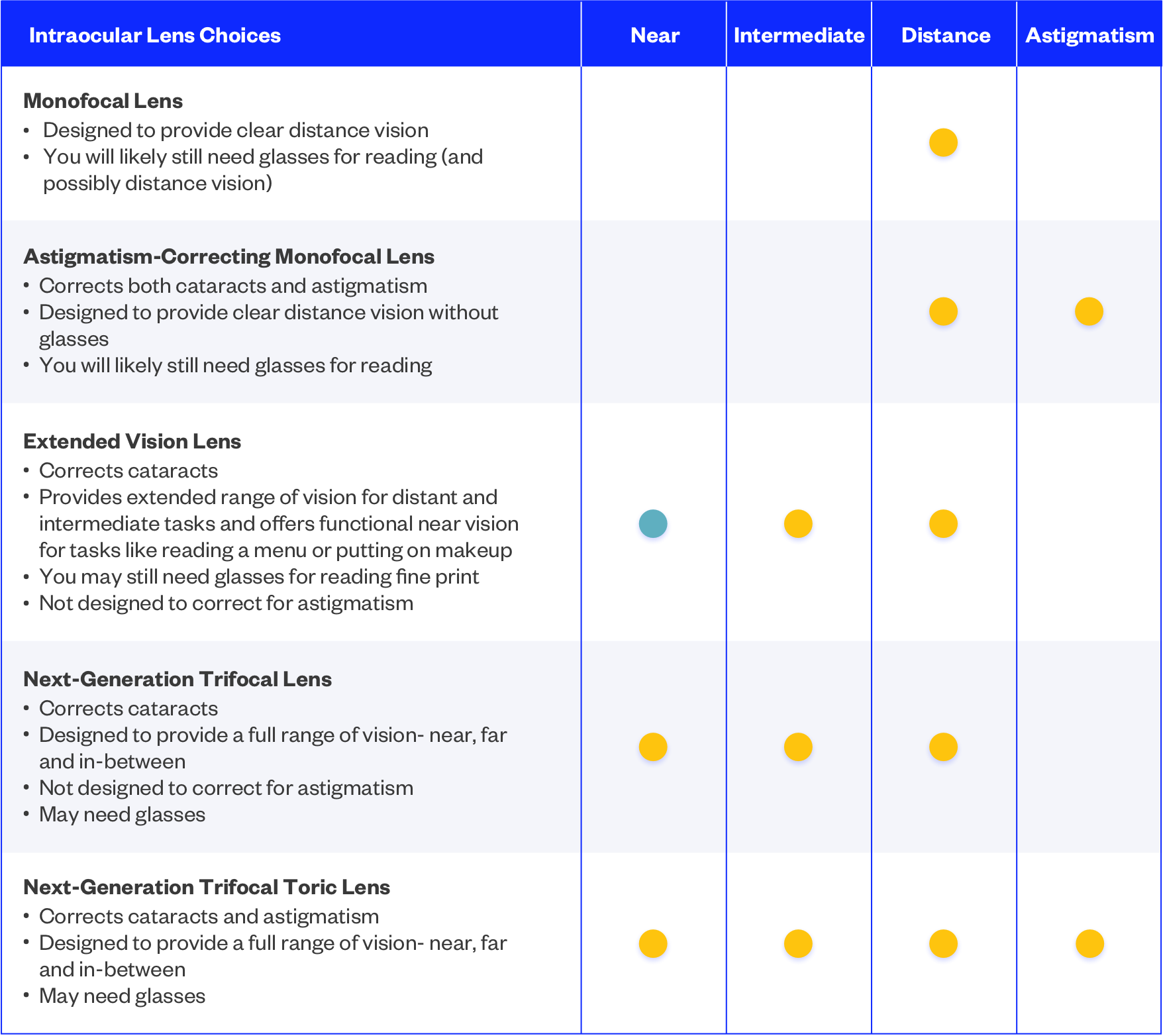Vision Options

There are many different lenses to choose from for your surgery. It’s important to know the pros and cons in order to make an informed decision with your eye doctor about your vision goals after cataract surgery.
You Can Choose From Many Different Types Of Lenses

Monofocal Lenses
Also sometimes known as the traditional lens option, are designed to correct vision at one focal point – often distance vision.
Extended Vision Lenses
Extended vision lenses provide you with a continuous range of vision so you can reduce your need for glasses when performing routine activities after your cataract surgery. With these lenses, you can expect a continuous range of vision for distant and intermediate tasks, while also providing you with functional near visual acuity. Functional near visual acuity reduces your need for glasses when performing up-close tasks such as using your smartphone or reading a menu in adequate light, compared to a monofocal intraocular lens.
Trifocal Lenses
Trifocal lenses are one of the latest advances in vision correction technology. They are designed to enhance your lifestyle by providing clear vision at near, intermediate and far distances for clear, complete focus.
Toric Lenses
In some eyes, the surface of the cornea is oval shaped rather than round, which scatters light across multiple focal points. This is called a corneal astigmatism and can cause blurred or distorted vision. Toric lenses are designed to minimize the irregularities from the cornea and can also correct your astigmatism at the time of cataract surgery. Your eye doctor will advise if you require a toric lens. You may be a candidate for a extended vision toric lens or a trifocal toric lens. Choosing one of these advanced technology lenses will provide astigmatism correction along with vision correction options.
Your Intraocular Lens (IOL) Choices
An Intraocular Lens is an artificial lens that is implanted during surgery to replace the natural lens that has become clouded due to cataracts. After a surgeon removes your cataract-clouded lens, he or she will implant the intraocular lens you discussed before your procedure. There are many lenses to choose from for your surgery. It’s important to know what each type of lens can offer you so you can make an informed decision.

It is very important to choose the lens that best matches your vision goals.
Some Intraocular Lenses help conditions beyond cataracts and reduce the need for glasses altogether. Talk to your eye doctor to learn more about the options to help you see near, far and everything in-between.
Take our Self-Assessment Quiz to determine which lens is right for you.
Night Driving With Intraocular Lens Implants
After your procedure, you may notice some glare with bright lights and halos around light sources, which are more noticeable at night. For most people, the side effects are subtle, and they feel they can ignore them. Your brain is generally able to adapt to the IOL, with the glare and halos becoming less noticeable over time.
If the glare and/or halos remain significantly noticeable, be sure to inform your eye doctor.



Simulated vision results may vary as with multifocals patients may experience visual disturbance.